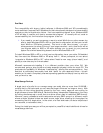
7
Booting from CD
You will need to tell your computer to boot from the Windows CD-ROM instead of your
(presumably blank and formatted) hard drive. To do so, you must access your
computer’s BIOS (usually hitting DELETE key during boot up will access the BIOS; some
computers use F8 or another key, so check your computer’s documentation or the
manufacturer’s website). Once in the BIOS, you will need to change the order of boot
up devices. This is normally set for (1) floppy drive, (2) hard disk, (3) CD-ROM. Make the
CD-ROM the first boot device. Put the Windows CD in the drive and restart. After
stepping through the boot up you’ll see a message “Press any key to begin installing
Windows.”
Setup Tweaks – Things to Do During the Install
There are some actions you will need to take during the initial XP installation, as they set
certain system defaults which are much more difficult to change later.
FAT32 vs. NTFS
You have the option under W2k and XP to choose the file system that best suits your
needs, FAT or NTFS. FAT (File Allocation Table) is the native file system based on the
Windows 9x kernel (including 95, 95a, 95b, 95c, 98, 98se and ME). NTFS (New Technology
File System) is the native file system for operating systems based on the Windows NT
kernel (including NT4, 2000 and XP). During the installation, Win2K or XP will ask if you
want to convert the installation partition to NTFS. If you need compatibility for Windows
98 – especially if you want to dual-boot – don't convert.
While NTFS offers a number of improvements over FAT32, most of these advantages are
not all that applicable to audio, and you are unlikely to see a major performance
difference between the two. Moreover, defragmenting your drives (something you
should do on a regular basis anyway) is substantially quicker in FAT32. Be aware that
Windows 9x cannot read data on NTFS-formatted drives. Generally speaking, you should
use FAT32 if you are doing a parallel installation with Windows 9x/ME, or if you will need to
work with files created with a FAT32 system (opening old song files, working with others
using FAT32-based systems, etc.) leave everything with FAT32.
One exception would be if you’ll be working with video or other large files in excess of 4
GB; or if you also use your PC to browse the internet or the computer is part of a LAN
running XP Professional. Only NTFS can limit access rights to your files and therefore
provide the security needed for a networked computer. In this case, select NTFS for all
partitions except those which are to accommodate your audio data later.


















